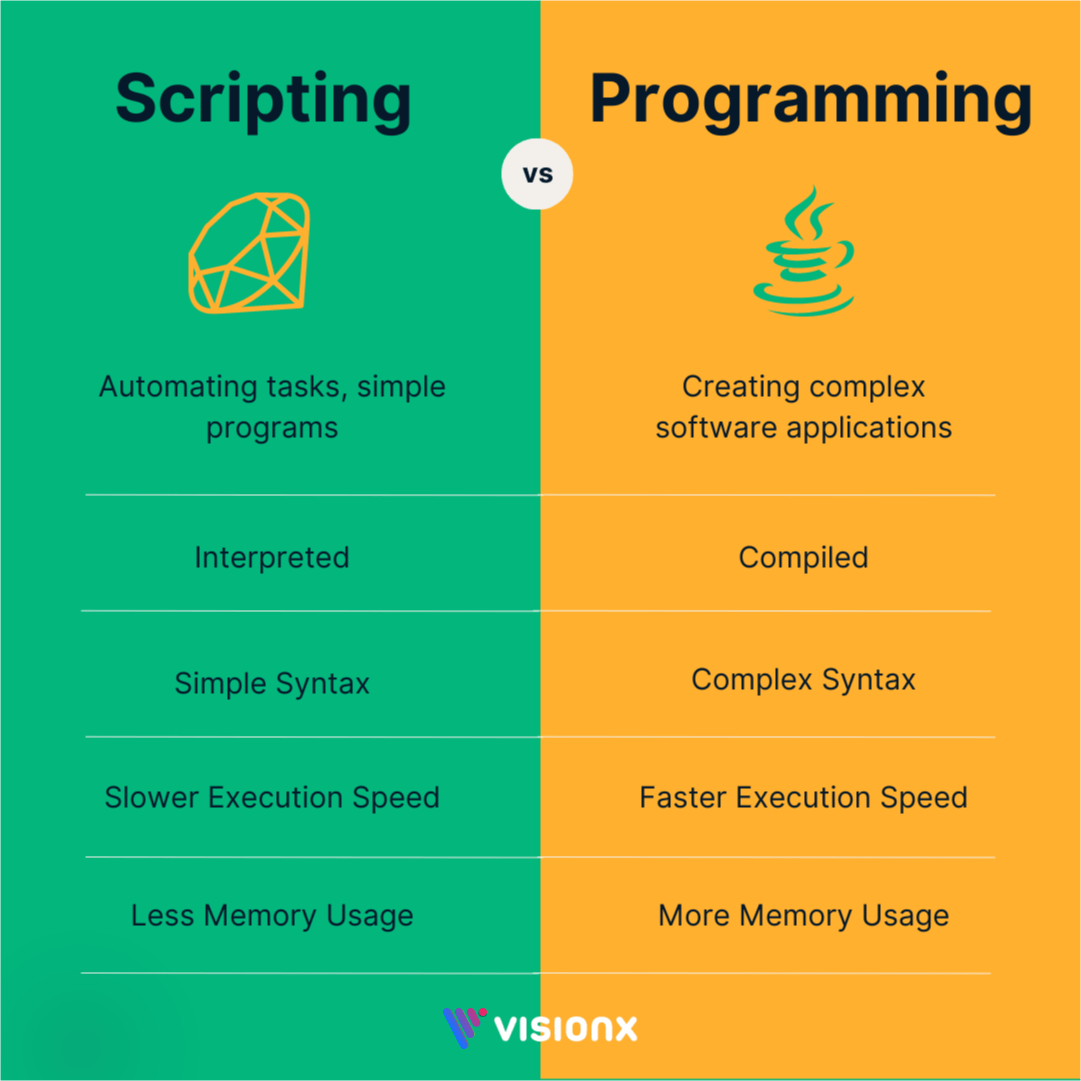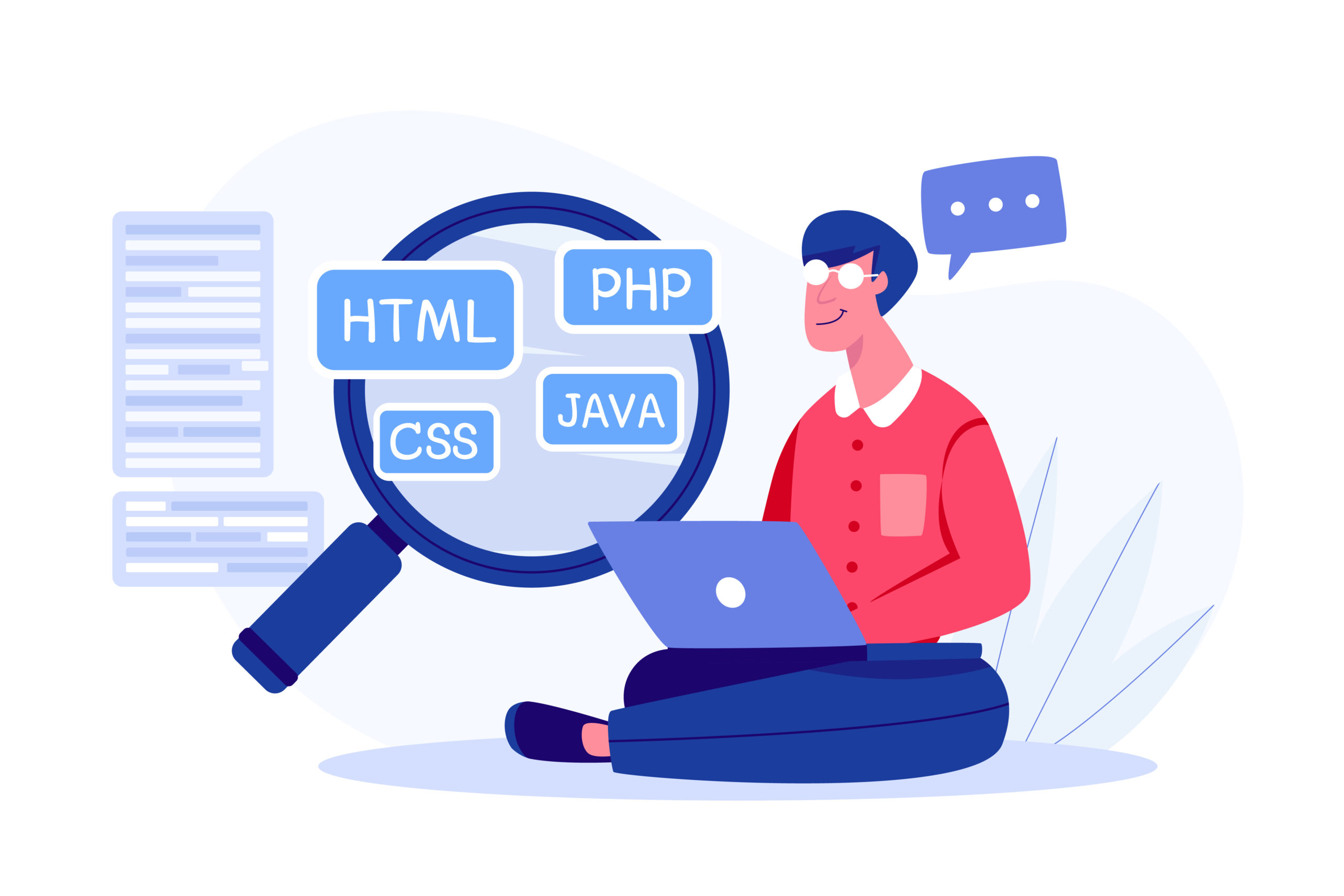The world of computer programming is vast and diverse, with many languages and tools available to developers. Two terms often used when discussing programming are “scripting language” and “programming language.” While the two terms may seem interchangeable, they refer to distinct types of languages with different characteristics and use cases.
In this blog post, we will explore scripting language vs programming language and how they are used in software development. We will also provide some examples of popular scripting and programming languages and highlight their key features.

What is a Scripting Language?
A scripting language is a programming language designed to automate tasks. Scripting languages are typically used for web page scripting, server-side scripting, and data parsing. They are also used for creating small, simple programs that require little memory or processing power.
One of the key features of scripting languages is that they are interpreted rather than compiled. This means that the code is executed line by line as the computer reads it. The advantage of this approach is that it allows developers to quickly test and modify their code without requiring a lengthy compilation process.
Scripting languages are also known for their ease of use and flexibility. They typically have simple syntax and require less code than programming languages. This makes them a popular choice for beginners just starting in programming.
Examples of popular scripting languages include Python, Perl, and Ruby. Let’s look at each of these languages and their key features.
| Language | Key Features |
| Python | Simple syntax supports multiple programming paradigms (procedural, functional, and object-oriented programming) and extensive standard libraries. |
| Perl | Powerful text manipulation capabilities, support for regular expressions, and strong community support. |
| Ruby | Easy to learn, highly readable syntax, supports for metaprogramming. |
What is a Programming Language?
A programming language creates complex programs requiring much processing power and memory. Programming languages are typically used for creating software applications, operating systems, and other large-scale programs.
Unlike scripting languages, programming languages are compiled rather than interpreted. This means the code is translated into machine code before it is executed. This approach allows the program to run more efficiently since the machine code is optimized for the specific hardware it is running on.
Programming languages are also known for their power and flexibility. They typically have more complex syntax than scripting languages and require more code to achieve the same result. However, this also means they can create more sophisticated programs.
Examples of popular programming languages include C++, Java, and Swift. Let’s look at each of these languages and their key features.
| Language | Key Features |
| C++ | Powerful object-oriented programming capabilities, low-level memory access, and support for multiple paradigms (procedural, functional, and object-oriented). |
| Java | Platform-independent, object-oriented programming, automatic memory management (garbage collection). |
| Swift | Easy to learn, fast and efficient, strong type inference, support for functional programming. |
Scripting Language vs. Programming Language: Key Differences
Now that we’ve looked at the characteristics of scripting and programming languages, let’s summarize the key differences between the two:
| Characteristic | Scripting Language | Programming Language |
| Purpose | Automating tasks, simple programs | Creating complex software applications |
| Interpreted/Compiled | Interpreted | Compiled |
| Syntax | Simple | Complex |
| Amount of code | Less | More |
| Execution speed | Slower | Faster |
| Memory usage | Less | More |
While these differences may seem straightforward, it’s important to note that there is often an overlap between scripting languages vs programming languages. For example, a language like Python can be used for scripting and programming purposes, depending on the project’s needs.
Another critical point is that the distinction between scripting and programming languages needs to be clarified. Some languages, such as JavaScript, are often described as scripting and programming languages, depending on their use.
Choosing between a scripting language and a programming language depends on the project’s specific needs. A scripting language may be the best choice if you’re looking to automate tasks or create small, simple programs. A programming language is the better option for making a complex software application.
Conclusion:
In conclusion, the difference between scripting and programming languages is essential for anyone interested in software development. While both languages used to create computer programs have distinct characteristics and use cases.
Scripting languages are designed to automate tasks and create small, simple programs, while programming languages are used to make complex software applications. Scripting languages are typically interpreted and have simpler syntax than programming languages, while programming languages are compiled and require more code to achieve the same result.
While there is an overlap between scripting languages and programming languages, understanding the differences is essential for choosing the correct language for your project. By considering the specific needs of your project and the strengths of different languages, you can make an informed decision about which language is suited for your needs.
VisionX can help bridge the gap between scripting and programming languages by providing a low-code development environment that supports both. By helping you hire developers to build custom software development without writing a lot of code, VisionX can help speed up the development process and improve productivity.


